







Lecturer:
Lek. dent. Anna Skipirzepa,
Chairs:
Dr Beata Sawczuk,
Dr Suresh Nayar,
Language:
english
Simultaneous translation into:
polski
Cost:
included in the congress fee
In case of patients with orthognathic defects, using only orthodontic treatment is insufficient. Orthodontic treatment performed in these patients allows only the reduction of dental defects while it does not offer the possibility of improving facial features, bone proportions and functional disorders. Facial aesthetic and functional disorders both have a significant impact on a patient's quality of life. The maxillary and mandibular osteotomy technique is simillar at all clinics performing procedures in this area. Physical splints fabricated for the patients were most often used to establish bone relationships after osteotomy. Public facilities receive patients from different orthodontic facilities therefore splints are prepared in different ways which makes it difficult for surgeons and reduces the precision of treatment. In conventional planning for orthognathic surgery, surgeons use two-dimensional cephalometric analysis and dental casts mounted on the articulator with a facebow transfer of the patient’s occlusal plane, and manual model surgery is performed to predict the direction and extent of movement in the jaw bone segment. Surgical planning and 3D printing methods based on 3D digital models have higher accuracy in osteotomy and repositioning and are less time-consuming in comparison with conventional methods. Surgical outcomes after the use of a 3D printing splint show similar accuracies to those by wafers produced from conventional model surgery, and accurate, predictable, and efficient treatment outcomes can be achieved using 3D virtual planning. Several global companies have created surgical guides for osteotomy and displacements of the jawbone, but the cost of production is beyond the means of almost any patient that makes them unavailable in Poland by choice.
We have developed a new software that allows us to performe the guided osteotomy using 3D printed splints thnaks to digitization and spatial planning.
We have performed four surgical procedures using the new software.
The costs are minimal and relate to the process of printing the personalized splints of and stereolithographic models. The procedures take place within the framework of the National Health Fund each patient is under the care of a physiotherapist.
Advantages of the presented micrometric navigation system for orthognathic procedures:
-polish low-cost software with local technical support
-low unit design cost
-possibility to use a typical available 3D printer
-very low cost of printing
-possibility to plan and prepare templates in the laboratory at the surgery; no need for specialized external laboratories
-very fast planning and preparation cycle of the procedure
-wide range of modifications
-keeping of typical work procedures
-no limitations due to specific system, materials, prints in metal.
The lecture will be given by: Dr Karolina Pałkiewicz - Gierka
Order participation in the congress
Use registration link to register for the Congress